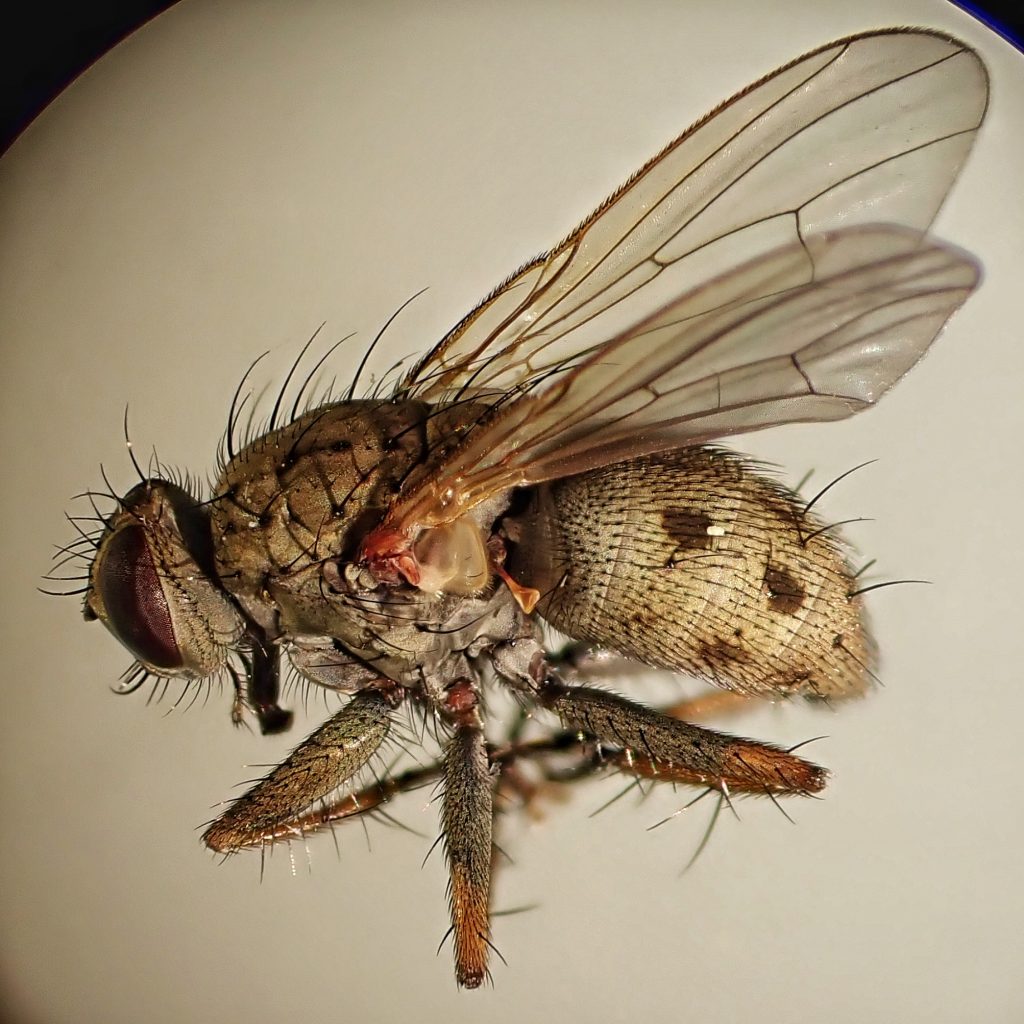
These flies are abundant in the cemetery near my house, and I’ve seen many of them (or at least very similar looking ones). However they are often difficult to approach for photography. But during a recent heat wave, with daily highs in the mid to upper 90s, I noticed that many flies could be approached as they rested on a block walled building in the shade. This is a phenomenon I also observed last summer, and to my mind it is one of the few benefits of really hot weather. For regular readers I should note that these were the flies I was photographing when I encountered the biker mentioned in the profile of the strawberry crown moth.
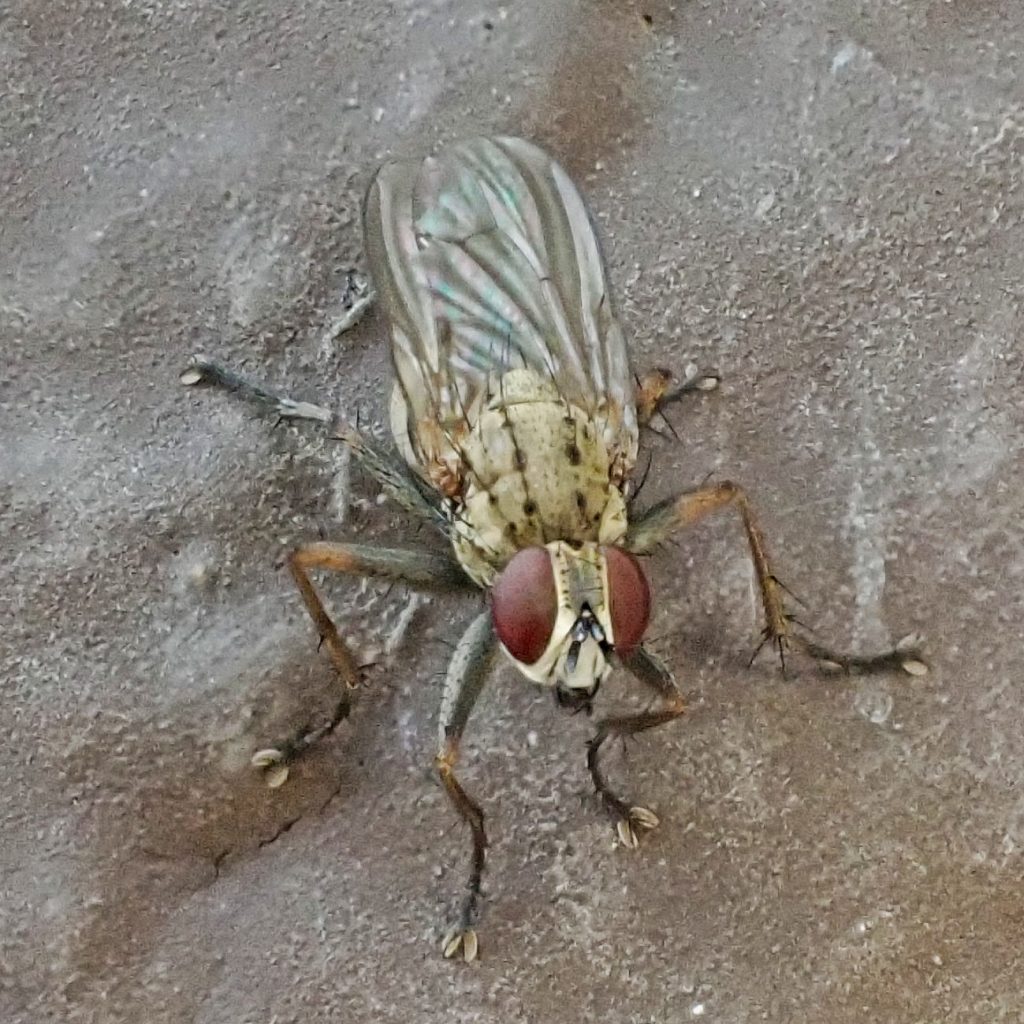
With my photographs I was able to narrow it down fairly quickly to Coenosia, and I was able to use the single specimen I captured to see the black with red tipped hind femur and paired tibia bristles of C. tigrina. These flies are members of the family Muscidae (house flies, and the members of Coenosia are called tiger flies, because they are predatory as both maggots and adults. The adults attack from behind, and immediately drop to the ground, insert their mouthparts (usually while laying on their side, and begin feeding. They are triggered by motion and indiscriminate about prey selection, and will often attack tiny thrown objects in a laboratory setting, ignoring immobile prey species that are located nearby. Cannibalism is not uncommon, at least in laboratory settings. Because of their effectiveness and voratiousness as predators they are being investigated as a biocontol for the onion fly (Delia antiqua).
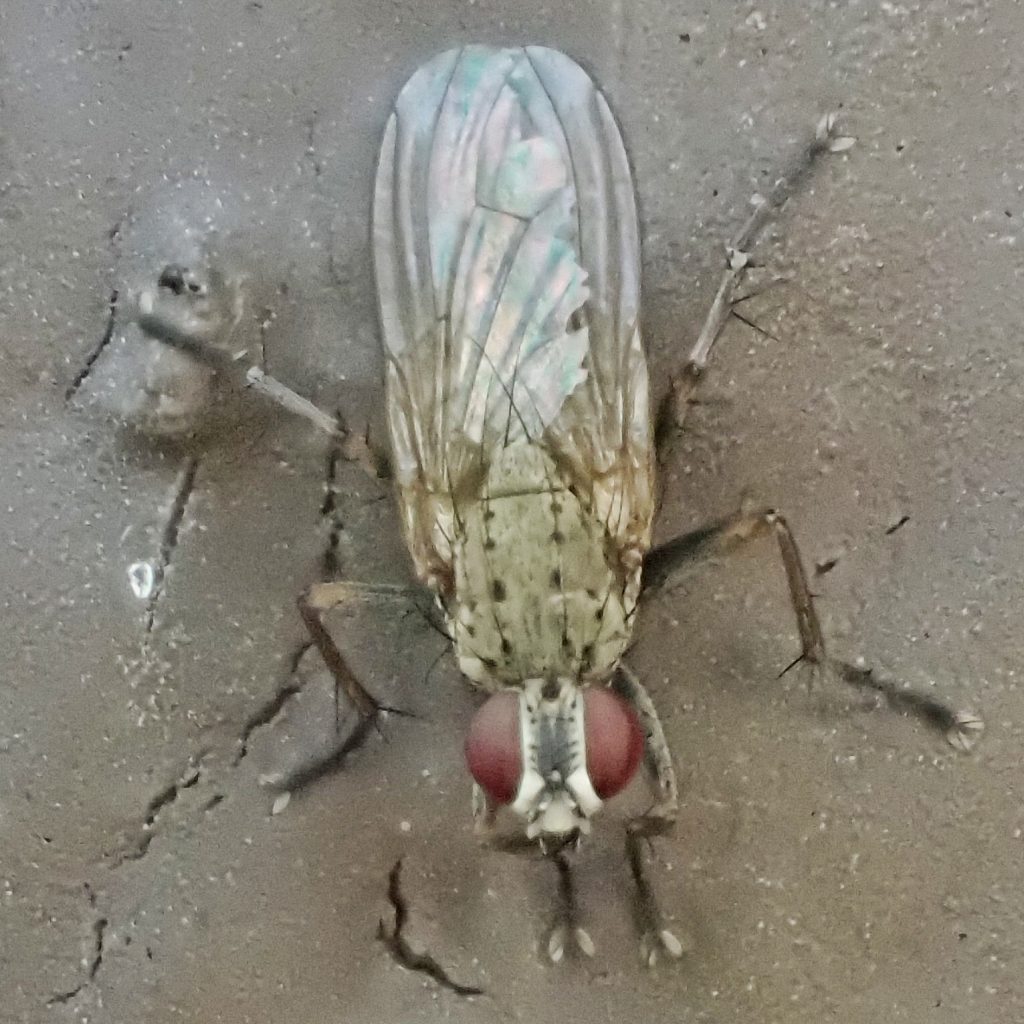
Larvae apparently follow slime trails and earthworm tunnels to find their host (there is a cryptic comment in the paper [Morris/Cloutier; 1987] where I got most of these details that indicates adult females may follow earthworm slime trails to find good ovipositing sites). Once attached they do not usually remain on the earthworm until its death, preferring to leave weakened hosts before the host is preyed upon. All in all a very fascinating fly, and I’ve barely scratched the surface. For more information I would recommend reading this paper by Morris/Cloutier; 1987.
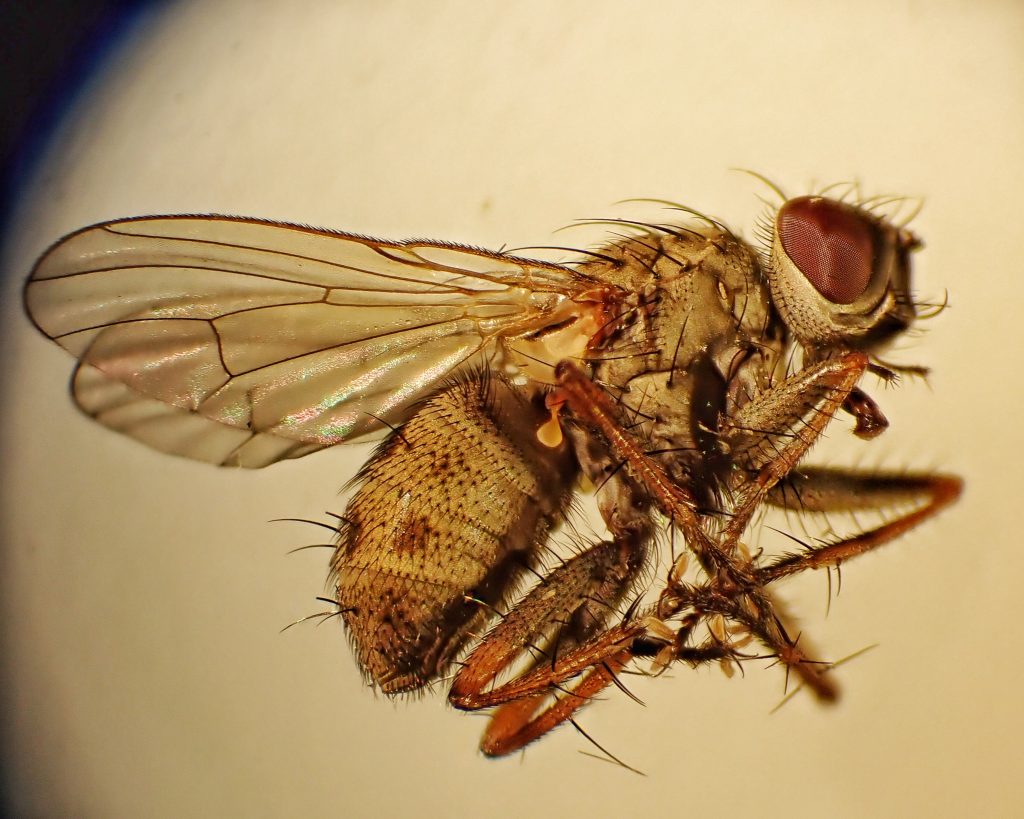
Description-Small (6-8mm long) yellowish grey fly with 2 rows of dark spots on the thorax, and (usually) 6 dark spots on the abdomen; hind femurs are dark grey with red tips near the joint with the tibia, and hind tibia have a sat of closely paired bristles.
Similar species-Other Coenosia lack the combination of red-tipped black hind femurs, and a pair of bristles on the hind tibia; Helina sp. have dark mark at wing cross veins.
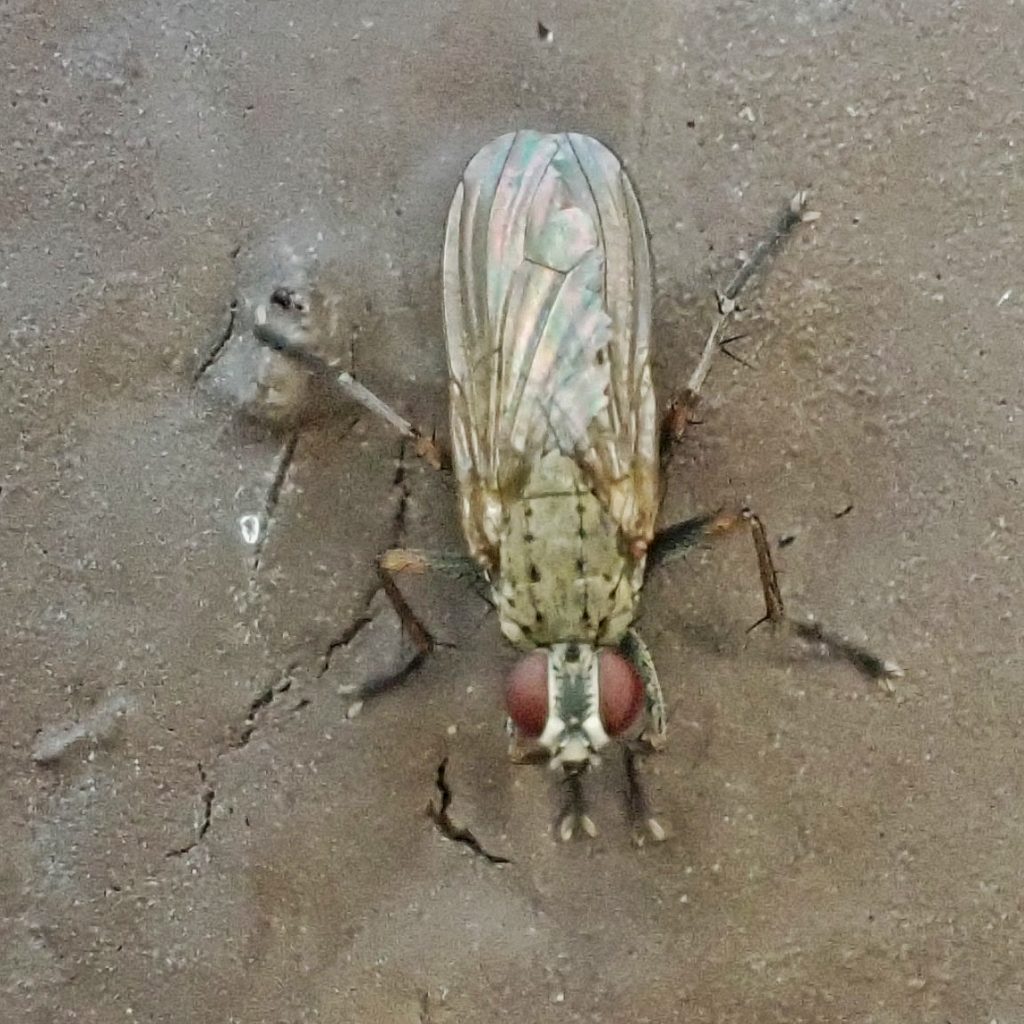
Habitat-Common in greenhouses; found outdoors in damp herbaceous areas with abundant small earthworm populations for the larvae, and small flies for the adults.
Range-Native to Eurasia, now Holarctic; probably region wide in appropriate habitat, but seems to be more common west of the Cascades.
Eats-Larvae prey on/parasitize earthworms, adults prey mostly on equal or smaller size flies.
Eaten by-Presumably any insectivore that can catch them.
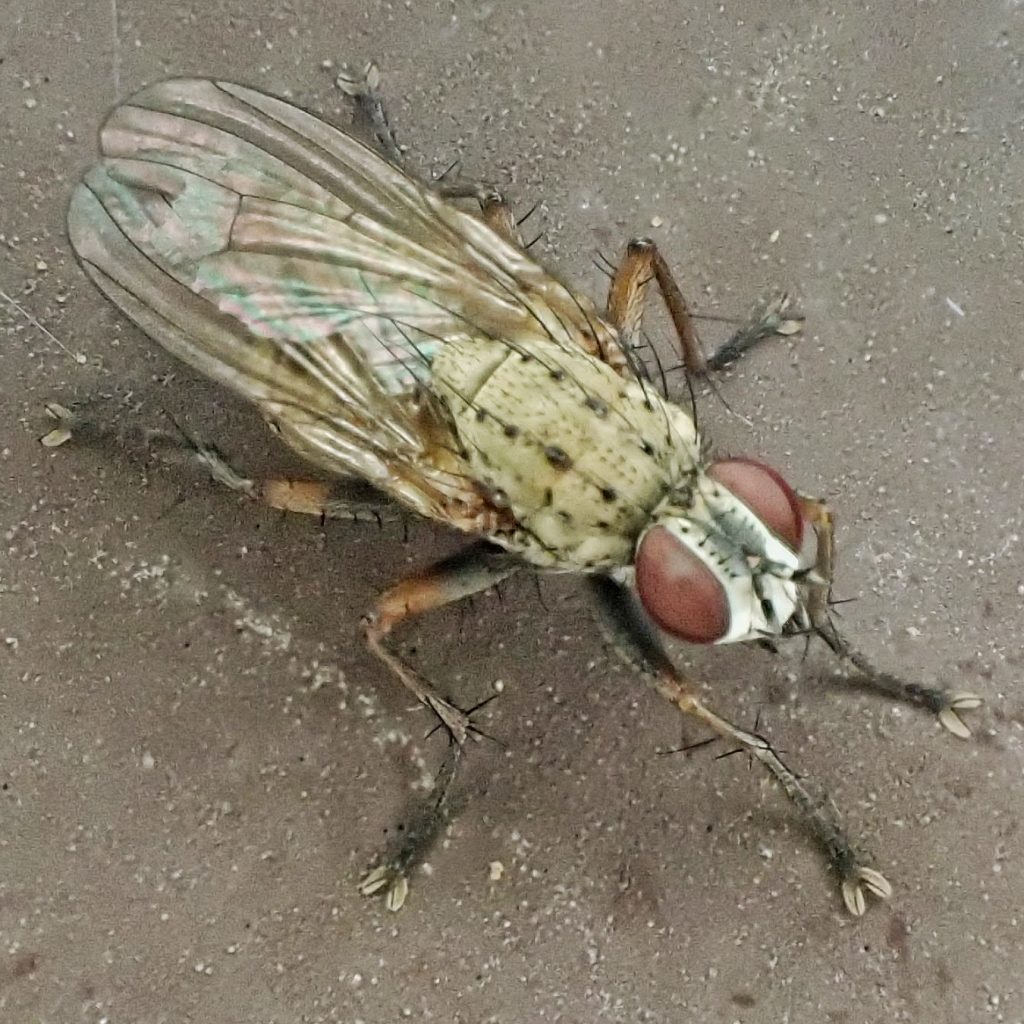
Adults active-May-October
Life cycle-females and males can breed directly after emergence, and females can oviposit on the day of emergence, but usually wait 1-3 weeks, waiting longer when there are more males about; 10-30 eggs per day are laid on soil, with a total of 200-400 in a lifetime; eggs hatch in 5-11 days, depending on incubation temperature, and 90% of eggs from a given clutch hatch within 24 hours of each other; larval development takes 16-40 days, with higher temps and better food resources accounting for the shorter times; adults may live from 1-3 months.
Etymology of names–Coenosia appears to be from the Latin word for ‘dirt’, presumably a reference to the larvae living in soil, although I cannot corroborate either of these assumptions.The specific epithet tigrina is from the Latin word for ‘tiger’, and is a reference to the predatory nature of both the larvae and adults.

https://bugguide.net/node/view/518144
https://www.naturespot.org.uk/species/coenosia-tigrina
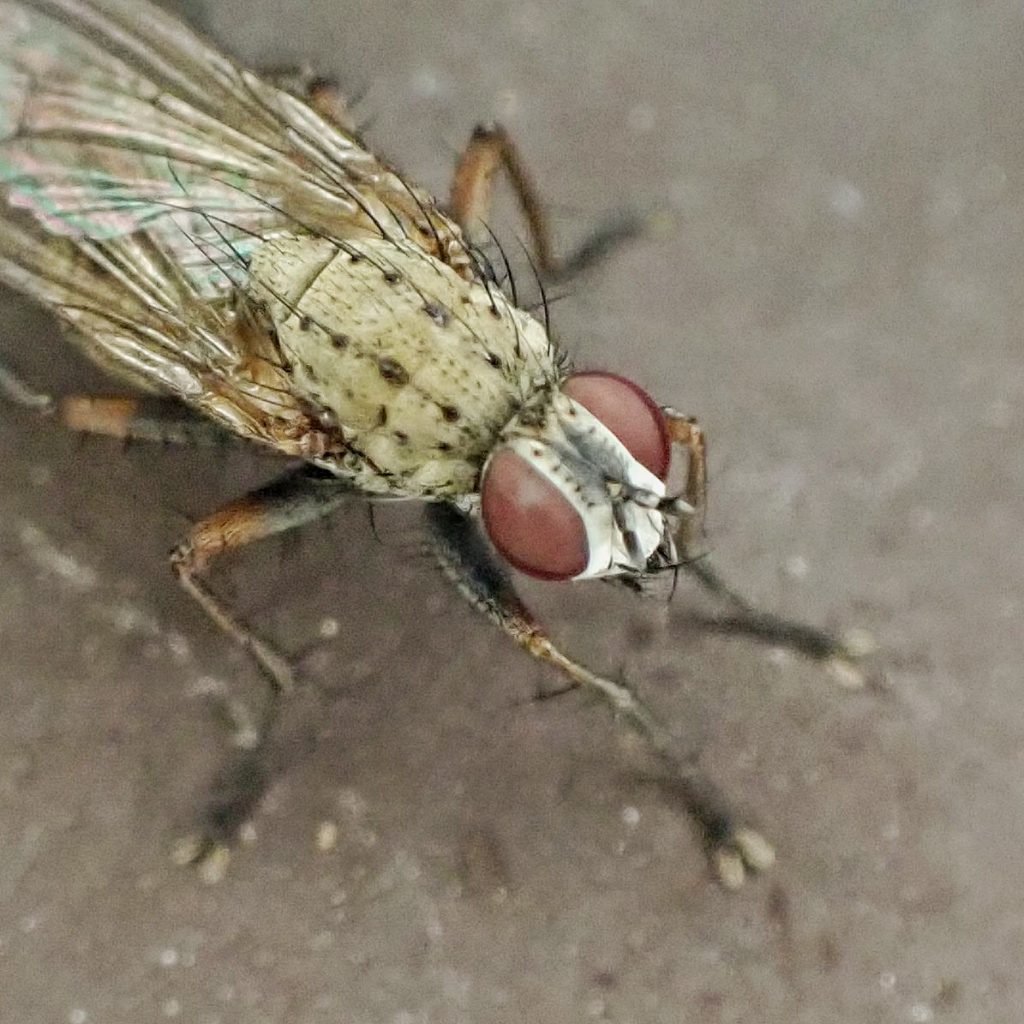
1 thought on “Coenosia tigrina”